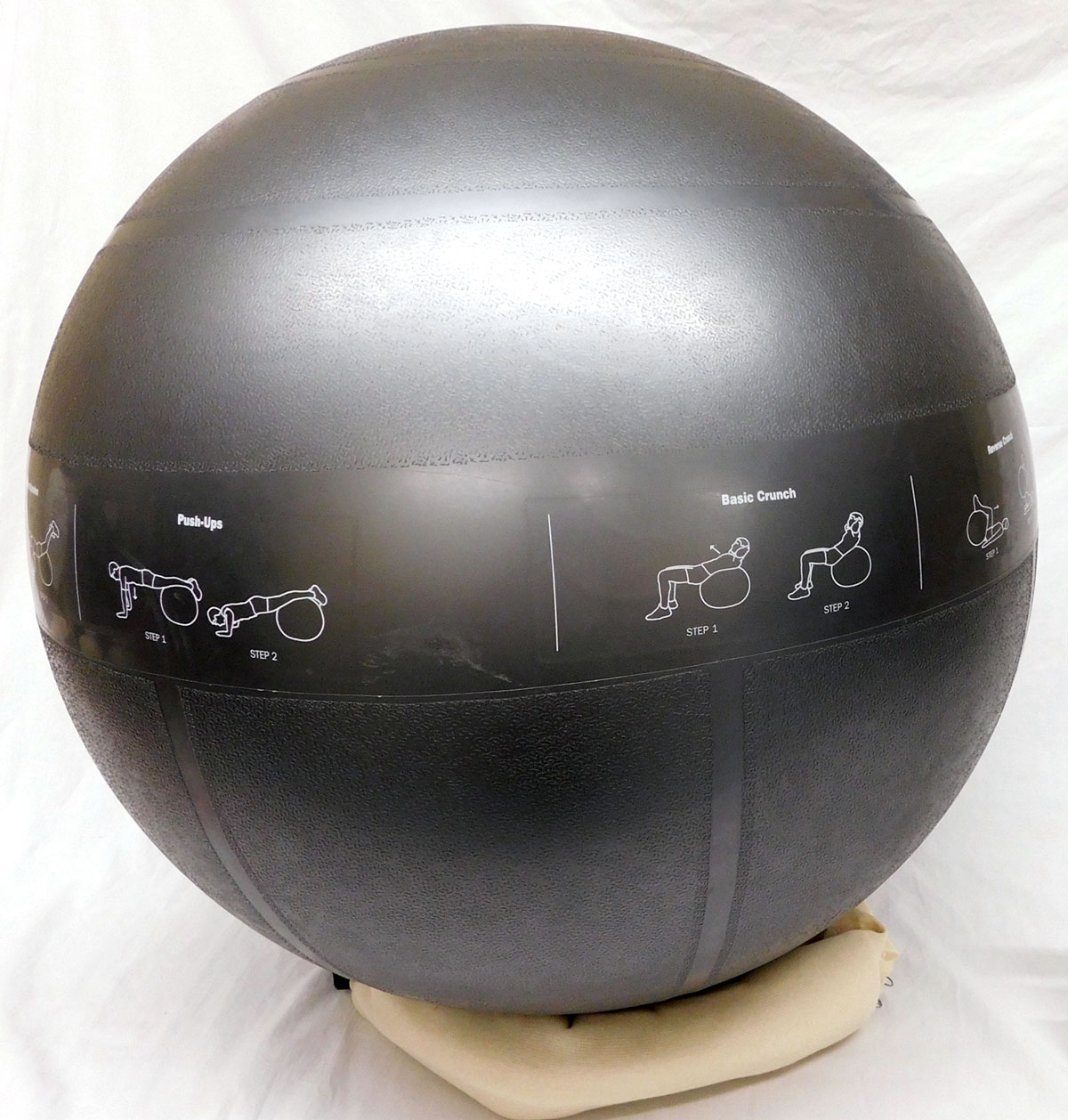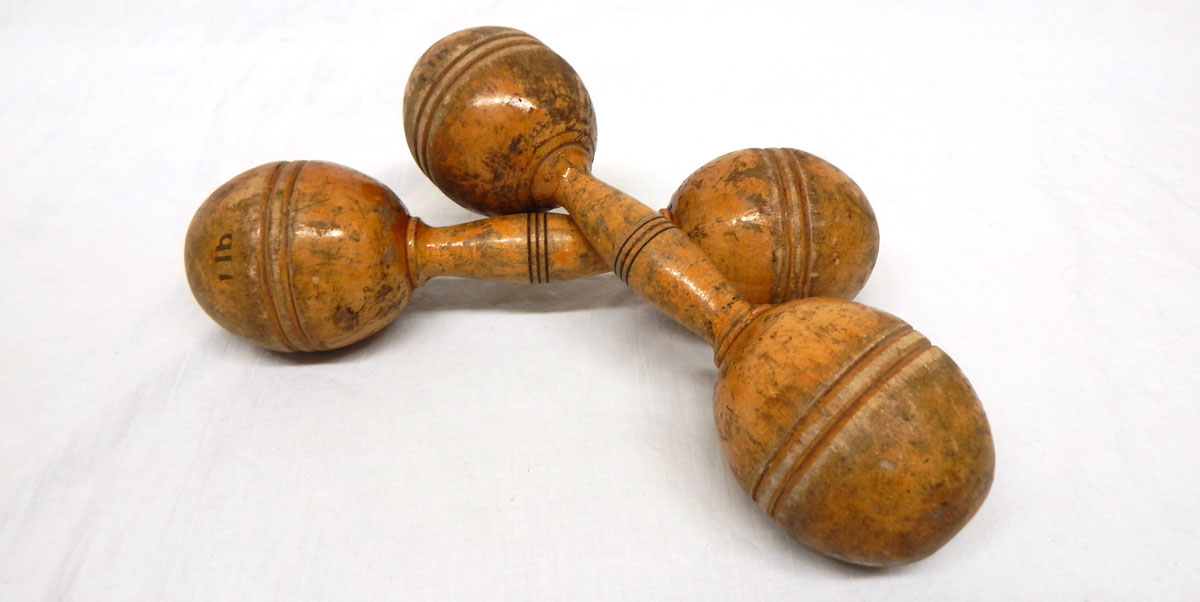Pyrex kitchenware is near and dear to my heart. I personally started collecting pieces over a decade ago when my mother gifted me my grandmother’s turquoise Butterprint Cinderella bowl. Growing up, that bowl was frequently on the supper table filled with mashed potatoes or cucumber salad. Now it’s a treasure in my home used to serve my own family.
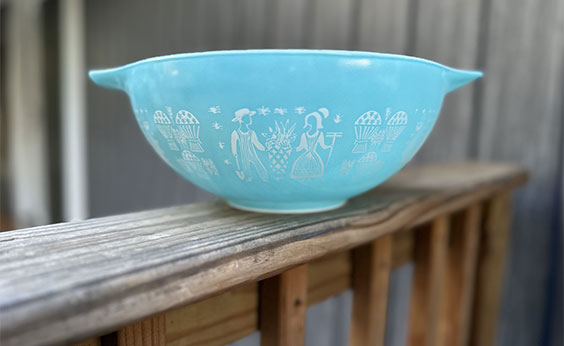
Who knew this Butterprint Cinderella bowl would spark my lifelong passion for Pyrex?
During my first tour of the museum collections after starting work at the State Historical Society in fall 2023, I was surprised to find a few sets of Pyrex in primary colors on the shelves. While I use my Pyrex daily, I had not taken the time to consider the impact of 1940s and 1950s Pyrex. I decided to dig beyond the surface beauty of these vibrantly colored bowls and discover how Pyrex revolutionized kitchens across the United States.
In my research I was excited to find that the Corning Museum of Glass in New York had extensively blogged about this very topic and even had an exhibition at that museum titled “America’s Favorite Dish: Celebrating a Century of Pyrex.” The Pyrex brand celebrated 100 years in 2015.
The Birth of Pyrex
Before diving into the kaleidoscopic range of this colorful kitchenware, we should understand Pyrex's origins. According to the Corning Museum of Glass, the Pyrex brand was introduced by Corning Glass Works (now Corning Inc.) in 1915. Initially, Pyrex was marketed as laboratory glassware, prized for its ability to withstand extreme temperature changes without breaking. The transition from laboratory to kitchenware was spearheaded by Bessie Littleton, wife of Corning scientist Jesse Littleton. After successfully baking a cake in a sawed-off battery jar, she inspired Corning to produce bakeware for the home cook.
In the late 1920s, Corning hired Lucy Maltby, a full-time scientist and home economist, to evaluate their products. Her work in the test kitchen resulted in a redesign of Pyrex bakeware: Handles were added, pan volume increased, and the bakeware’s diameter was adjusted so two cake pans could fit side by side in a standard oven. Maltby was an advocate for the consumer, her influence was everlasting.
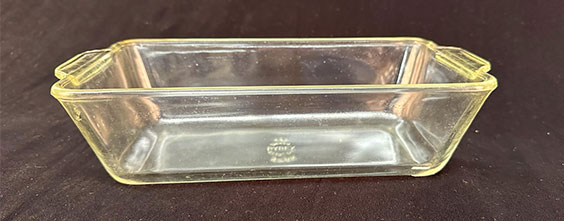
Pyrex bread or loaf pan, 1950-1960. SHSND 2018.98.11
Pyrex quickly became a staple in the home, with ads assuring “no home can have too much Pyrex.” Its extensive line of platters, baking dishes, serving bowls, ramekins, tea pots, and measuring cups began popping up in department stores. You can see more wonderful examples of vintage Pyrex advertising on The Corning Museum of Glass website.
According to the company, Pyrex nursing bottles appeared on the scene in 1923. These baby bottles, fitted with a rubber nipple, were designed to be safely sterilized in boiling water to provide protection against germs.
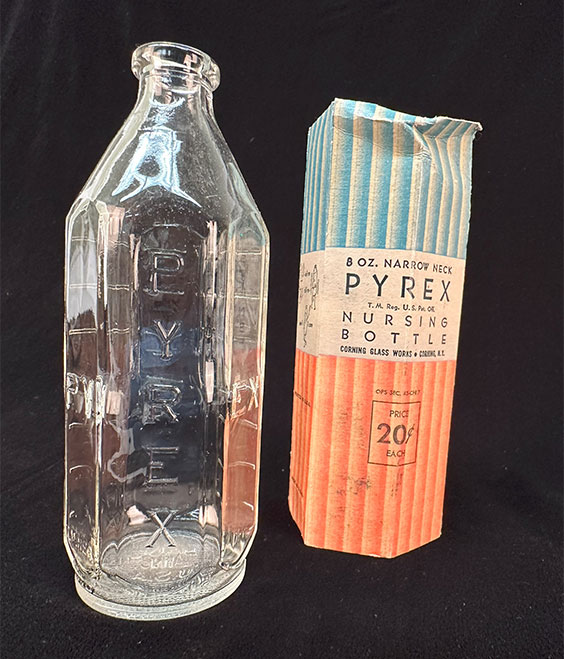
8 Oz. Narrow Neck Pyrex Nursing Bottle, 1947-1956. SHSND 1986.173.209
Introducing Color: The Famous Four-Piece Mixing Bowl Set
Pyrex's initial offerings were clear glass, which while functional lacked the decorative appeal that would later define the brand. In the period following World War II, Pyrex began to develop products in opalware, a white opaque glass. It was hygienic, easy to clean, versatile, and a workhorse in the kitchen.
Then came color.
In 1945, Corning transformed kitchen aesthetics by applying colors to their opalware Pyrex bowls. The iconic four-piece Pyrex mixing bowl sets in primary colors stormed into kitchens. Each bowl was designed to nest perfectly within the other for easy storage. The smallest bowl was blue, followed by red, green, and yellow.
These colors reflected the postwar era's vibrant, forward-looking spirit. The set became a feature in many American households, cherished not only for its functionality but also for its beauty.
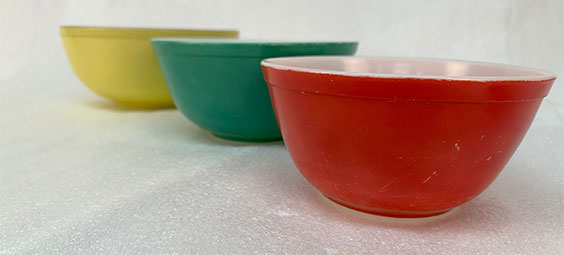
Pyrex mixing bowl set, Primary Colors, 1940-1950. The mixing bowl set in the State Museum’s collection is missing the small blue bowl. Given the wear on the bowls, it is clear this set was well used. SHSND 2018.98.1-3
Beyond the Mixing Bowls
While the mixing bowls were the stars, the Pyrex line quickly expanded to include refrigerator dishes, casseroles, and pie plates, also in primary colors. The refrigerator dishes, with their snug-fitting lids, were particularly popular, as they addressed a common need for food storage in an era before plastic containers became commonplace.
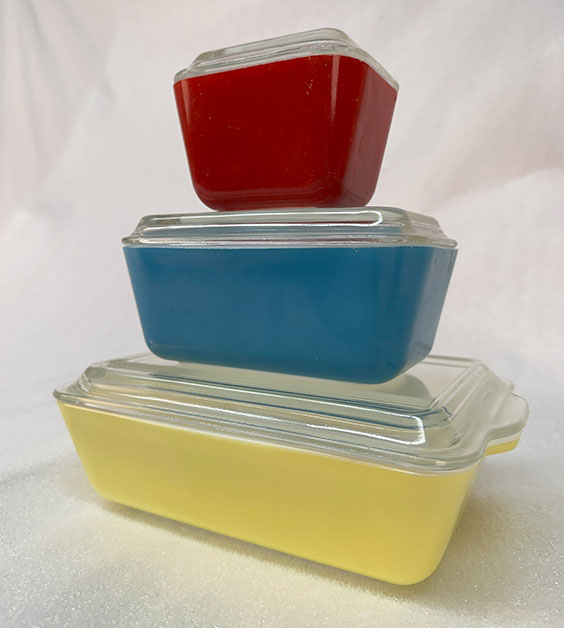
Pyrex Refrigerator Dishes, Primary Colors, 1950-1959. These dishes are smartly made, stacking neatly atop one another to conserve precious refrigerator space. SHSND 2013.92.49-51
Pyrex dishes were created with the mantra “bake, serve, store.” These products were more than just pretty; they were also durable and resistant to thermal shock. This meant they could go from the fridge to the oven to the table, a versatility that was revolutionary at the time. Hostess sets allowed for baking scalloped dishes in the large bowl, while individual meat pies or desserts could be prepared and served in the ramekins.
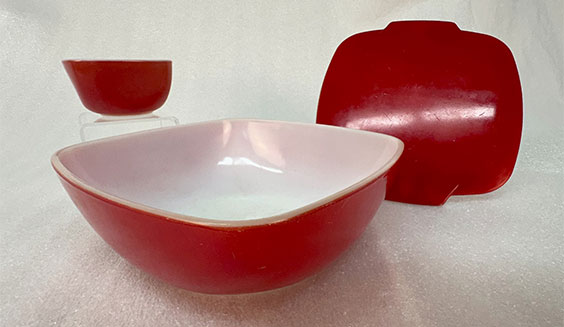
Hostess Covered Casserole and Table Set in red, 1949-1953. SHSND 2018.98.4
A Lasting Legacy
Pyrex has continually adapted to meet the tastes and needs of its consumers. After the Primary Color sets came the rise of patterns on turquoise and pink backgrounds in the 1950s, then earthy tones with bold designs in the 1960s and 1970s. The 1980s gave way to simple floral motifs and a more contemporary feel. Then came the clear glass revival of the 1990s, and what is old is new again. Today, Pyrex has a whole world of shapes, sizes, and colors to discover.
As we look back on the legacy of Pyrex, it’s clear these pieces are more than just kitchenware. They are symbols of a time when innovation met artistry, creating products that were both functional and delightful. There’s no denying the charm and historical significance of these colorful kitchen treasures.



